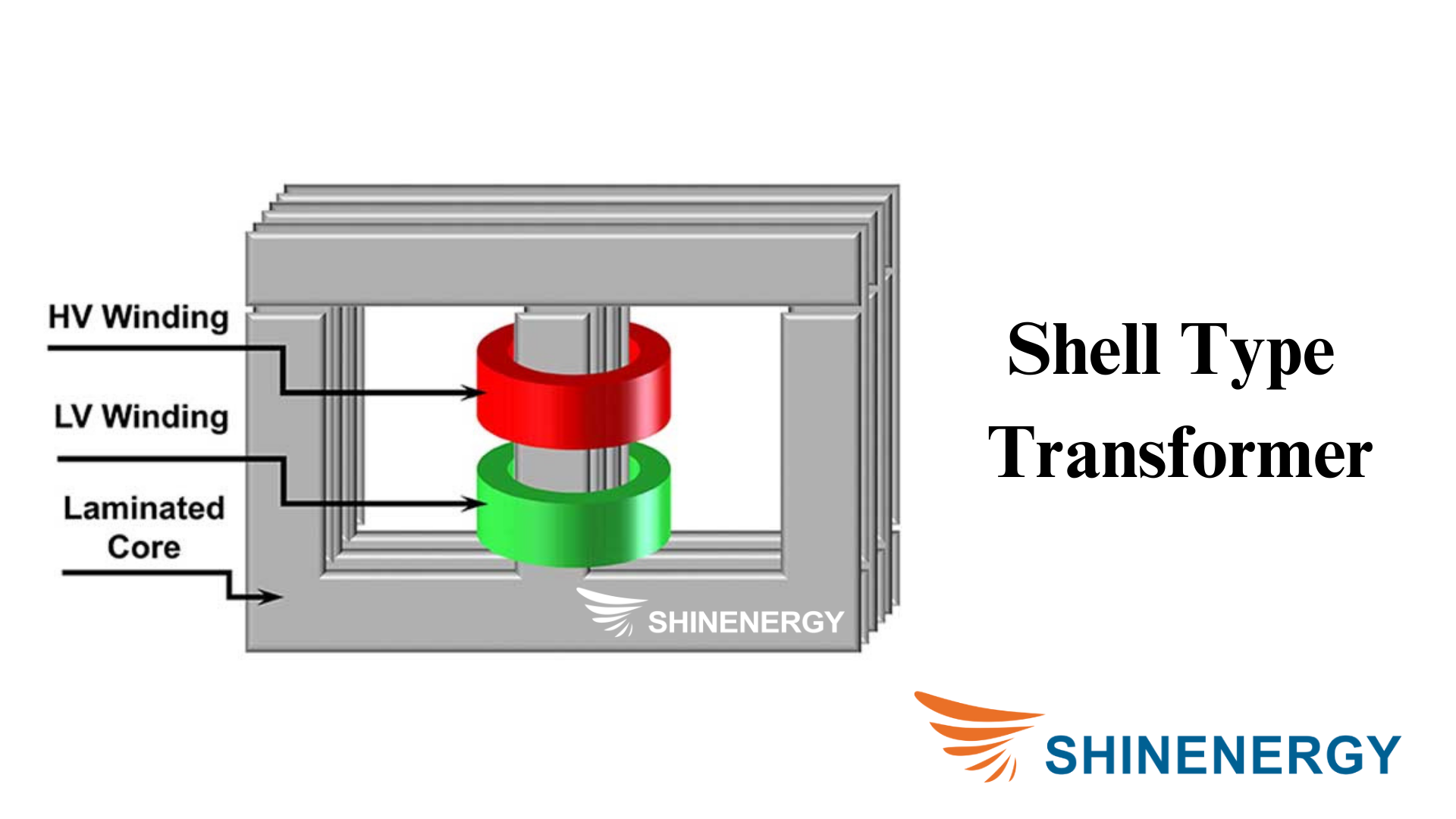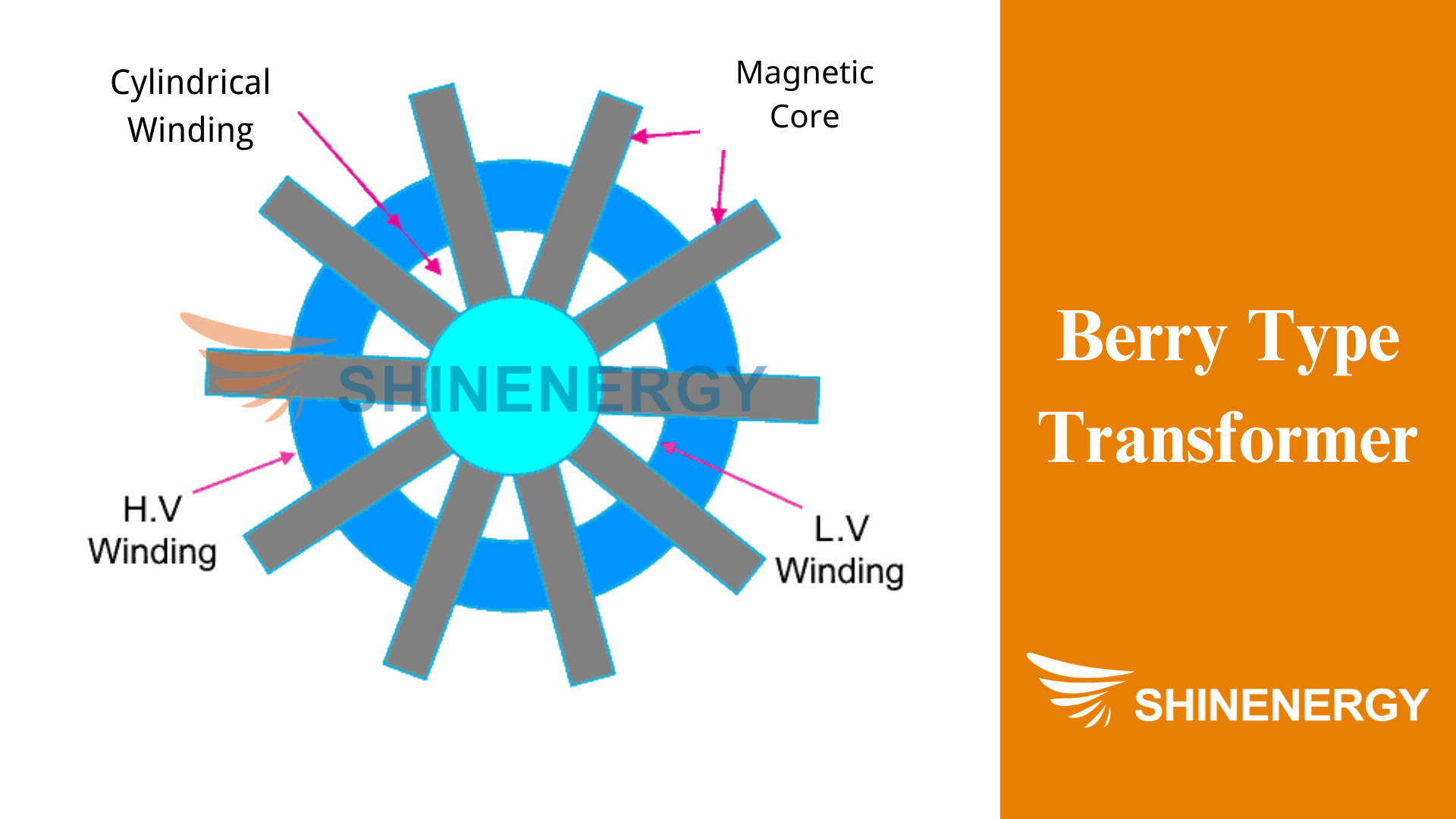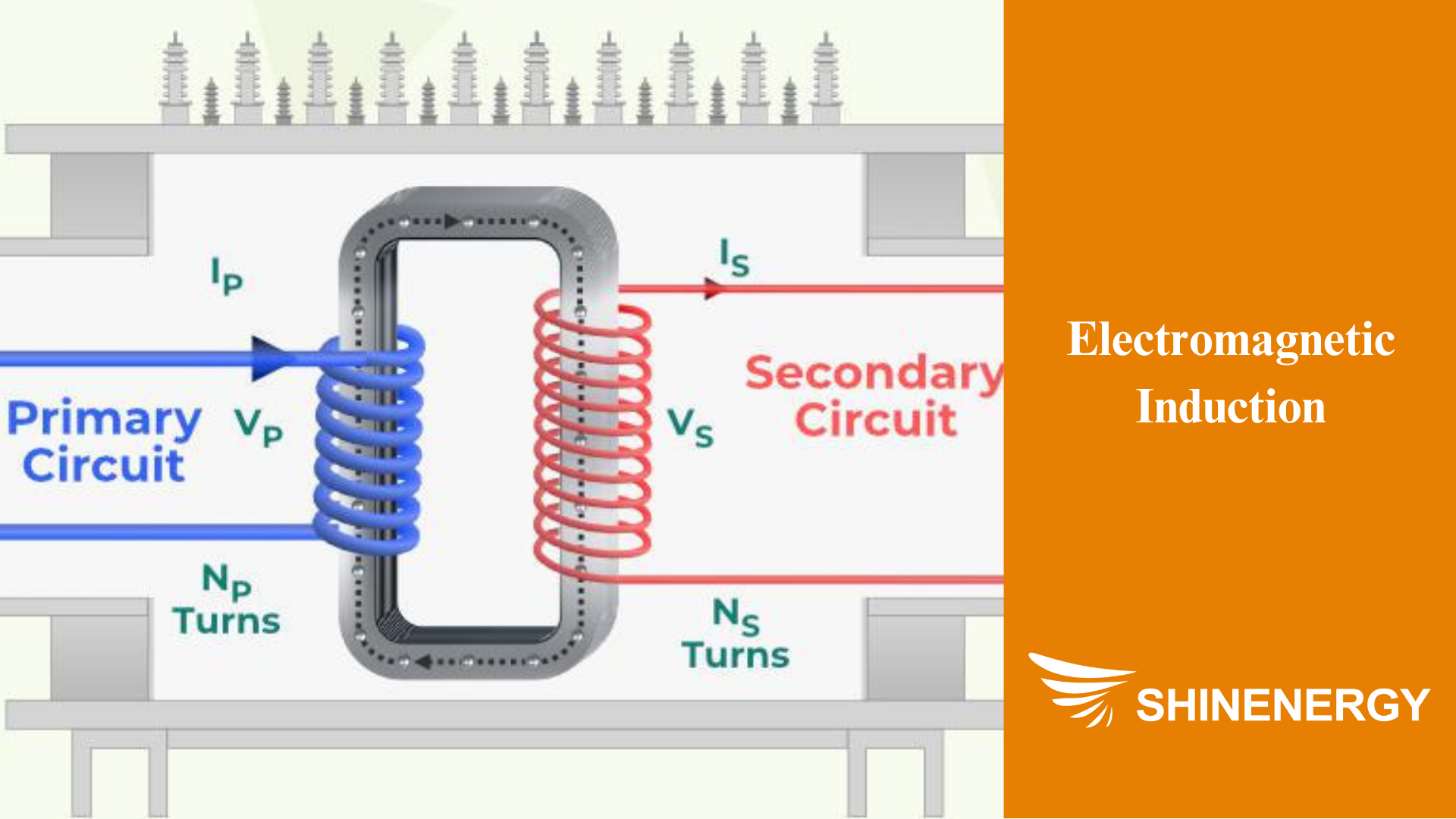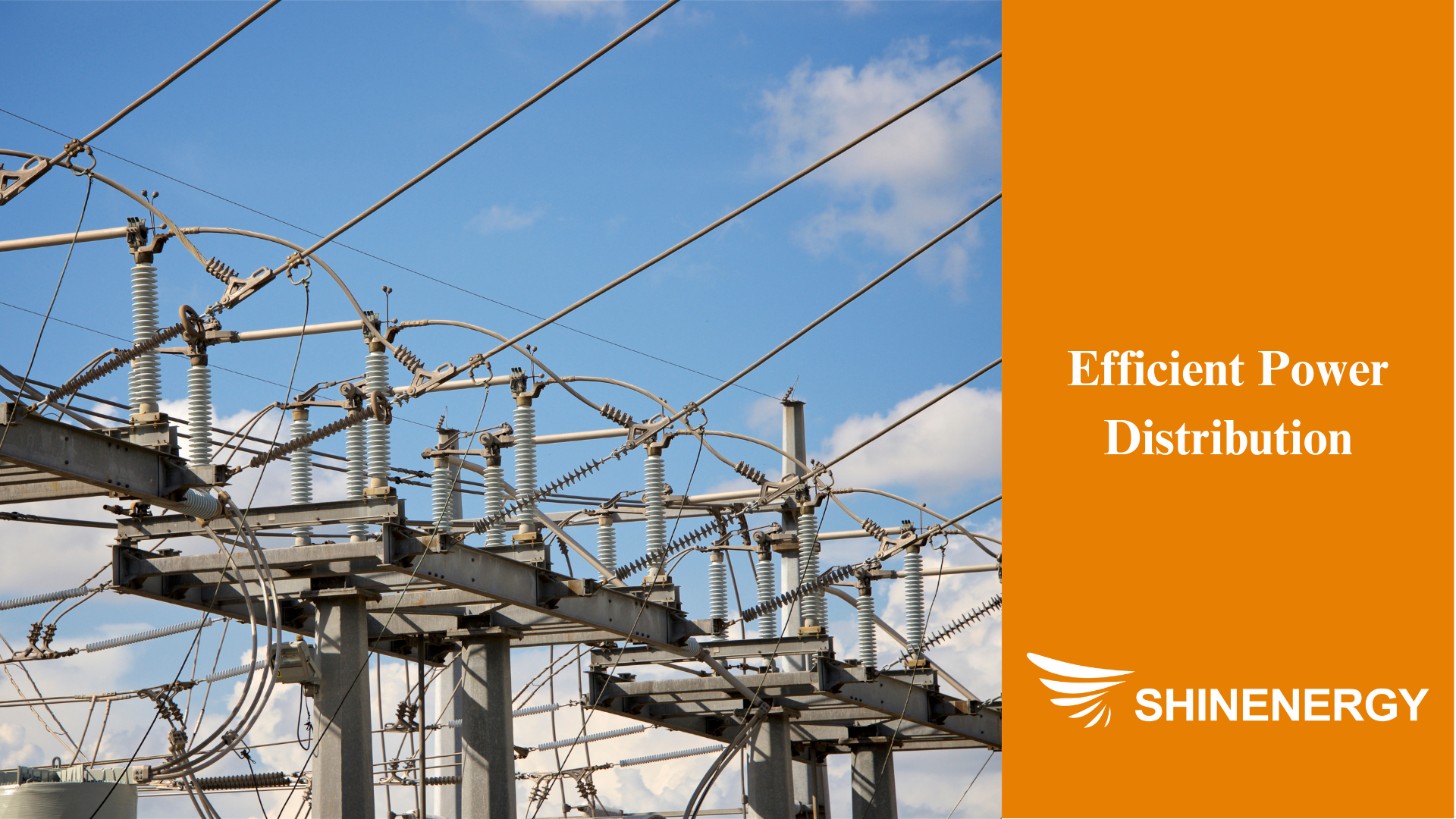Welcome to our guide to Electrical Transformer! Whether you’re new to the industry or a seasoned pro, here are the basics you need. From what an electric transformer is to the various types available, we’ll bring you up to speed on these important devices. Let’s get started!
What is an Electrical Transformer?

Figure 1-1 Electricity transformer
Simply put, a power transformer changes the magnitude of voltage. It can transform high voltage into low voltage, or vice versa, to facilitate the transmission and use of electricity in various locations. The core components of a transformer, the iron core, and windings, operate on the principle of electromagnetic induction. These components are integral to the functioning of transformers. Transformers are present everywhere in our daily lives, from the power grid to the electrical appliances in our homes, demonstrating their indispensable role.
Types of Electrical Transformer
Based on the Electrical Transformer’s Design
Core Type Transformer

Figure 2-1 Core Type Transformer
Core-type transformers feature a cylindrical core with windings wrapped around it. Their simple design makes them easy to understand and maintain. As a result, they are commonly used in power transmission and distribution systems. These transformers efficiently manage and distribute electrical power, making them essential in various applications.
Shell Type Transformer

Figure 2-2 Shell Type Transformer
Shell type transformers feature a core that acts like a shell, enclosing the windings. This design makes them more compact and provides better protection and support. Consequently, they are highly suitable for industrial applications. With their enhanced durability and efficiency, shell type transformers are ideal for demanding environments.
Berry Type Transformer

Figure 2-3 Berry Type Transformer
Berry-type transformers feature a round core, making them distinct in their design. T-hey are usually used in high-frequency applications due to their unique structure. Specialized for specific high-frequency equipment, these transformers excel in performance where standard transformers might not suffice. Their specialized nature ensures they meet the demands of high-frequency requirements efficiently. Transformers electric are essential components in the power grid, allowing the conversion of high voltage to lower, usable levels for various applications.
Based on the Electrical Transformer’s Function
Step-Up Transformer

Figure 2-3 transformer electrical symbol
A step-up transformer increases low voltage to high voltage, playing a crucial role in power stations. It boosts the voltage, allowing electricity to be transmitted over long distances efficiently. By raising the voltage, power losses during transmission are minimized, making the delivery of electricity more effective.
Step-Down Transformer

Figure 2-4 transformers electrical circuits
A step-down transformer performs the opposite function by reducing high voltage to a lower voltage. This reduction makes the electricity safe for use in our homes and businesses. By lowering the voltage, it ensures that the power is at a safe and usable level, thus protecting our appliances and equipment from damage. The electric pole transformer converts high-voltage electricity from the power lines to a lower voltage suitable for residential use.
Based on Electrical Transformer’s Usage
Power Transformers

Figure 2-5 Power Transformers
Power transformers play a crucial role in power transmission systems by carrying electricity from generating stations to distribution networks. They handle high voltages, which is essential for efficient power transfer. Their ability to manage these high voltages makes them vital in maintaining the stability and reliability of the entire power grid. The electrical substation transformer steps down the high-voltage electricity from the transmission lines to a lower voltage for distribution to local areas.
Distribution Transformer

Figure 2-6 Distribution Transformer
Distribution transformers carry electricity from the distribution network to our homes and businesses, ensuring its safe use. They step down the voltage, making it suitable for everyday applications. By reducing the voltage, distribution transformers protect our electrical appliances and provide a stable power supply for both residential and commercial needs.
Instrument Transformers

Figure 2-7 Instrument Transformers
Instrument transformers, which include current transformers and voltage transformers, play a vital role in measuring and protecting power systems. They ensure that current and voltage levels remain within safe limits. By providing accurate measurements, these transformers help maintain the stability and safety of the entire electrical system.
Isolation Transformers

Figure 2-8 Isolation Transformers
Isolation transformers isolate circuits and protect equipment from current shock and interference, providing an additional security barrier. Separating different parts of the electrical system enhances safety and reduces the risk of electrical faults. Their use ensures that sensitive equipment remains unaffected by disturbances, maintaining overall system integrity.
Autotransformers

Figure 2-9 Autotransformers
Autotransformers, being smaller than ordinary transformers, use some common windings to adjust the voltage. They efficiently regulate voltage changes, making them ideal for various applications. By sharing windings, autotransformers are more compact and cost-effective, providing a practical solution for voltage regulation needs. Transformers are vital components in electrical systems, ensuring the efficient transmission and distribution of power across various regions.
Potential Transformers

Figure 2-10 Potential Transformers
Potential transformers accurately measure high voltage values and are often used in power monitoring and metering systems. By ensuring the accuracy of voltage measurements, they help maintain the reliability of electrical systems. These transformers play a critical role in monitoring and controlling high voltage levels, contributing to the overall efficiency and safety of power networks.
Based on the Electrical Transformer’s Phases
Single-Phase Transformer

Figure 2-11 Single-Phase Transformer
Single-phase transformers operate in single-phase power systems and are commonly found in homes and small commercial locations. Their simple design makes them easy to install and maintain. Due to their straightforward setup, they are a popular choice for residential and small-scale commercial applications, providing reliable and efficient power conversion. A transformer is an essential device in the electric power industry, used to step up or step down voltage levels for efficient power transmission.
Three-Phase Transformer

Figure 2-12 Three-Phase Transformer
Three-phase transformers operate in three-phase power systems and offer greater efficiency, making them ideal for industrial and large commercial applications. They handle more power, which suits them for large-scale power needs. By efficiently managing higher power loads, three-phase transformers support the demanding energy requirements of big factories and commercial buildings.
Based on the Electrical Transformer’s Cooling Methods
Oil-Cooled Transformer

Figure 2-13 Oil-Cooled Transformer
Oil-cooled transformers dissipate heat by using oil. The oil circulates inside the transformer, carrying away the heat, which makes it suitable for large and high-power applications. This cooling method ensures that the transformer operates efficiently and remains within safe temperature limits, enhancing its performance and longevity. The electrical transformer box outside our building regulates the voltage, ensuring a stable power supply to all the apartments.
Air-Cooled Transformer

Figure 2-14 Air-Cooled Transformer
Air-cooled transformers dissipate heat through air movement. Their simpler design makes them ideal for small and medium-sized transformers, as they do not require complex cooling systems. This makes them easier to maintain and more cost-effective for less demanding applications, ensuring efficient operation without the need for additional cooling infrastructure.
Water-Cooled Transformer

Figure 2-15 Water-Cooled Transformer
Water-cooled transformers dissipate heat by using water. The water circulates inside the transformer, quickly carrying away the heat, making it suitable for high-power and special applications. This efficient cooling method ensures that the transformer can handle demanding conditions, providing reliable performance in environments where traditional cooling methods might not suffice.
How Electrical Transformers Work?
The working principle of electric transformers is actually not complicated. They change voltage through a phenomenon called electromagnetic induction. Let’s explain this process in detail. An electric motor transforms potential energy into mechanical energy.
Detailed Explanation of the Operation

Figure 3-1 How does an electrical transformer work
Electrical transformers consist of two main parts: a primary winding and a secondary winding, both wound on a common iron core. When an alternating current passes through the primary winding, it generates a changing magnetic field in the iron core. This changing magnetic field then induces a voltage in the secondary winding, thereby achieving voltage conversion. By transferring energy between the windings, the transformer efficiently converts the voltage to the desired level, making it essential for various electrical applications. Transformers play a crucial role in our electrical grid by transforming electricity from high voltage to low voltage, making it safe for use in homes and businesses.
Role of Primary and Secondary Windings

Figure 3-2 Role of Primary and Secondary Windings
The primary winding inputs the current, and as the current passes through, it generates a magnetic field. This magnetic field then conducts to the iron core and transfers to the secondary winding. The secondary winding outputs the current, receiving the changing magnetic field from the iron core and converting it into voltage. By adjusting the number of coils in the primary and secondary windings, we can control the output voltage effectively. This process allows for precise voltage regulation in various electrical applications.
Electromagnetic Induction

Figure 3-3 Electromagnetic Induction
Electromagnetic induction forms the core principle of transformer operation. When the current in the primary winding changes, it generates a changing magnetic field in the iron core. This changing magnetic field then induces a voltage in the secondary winding. The entire process occurs without mechanical contact, relying solely on electromagnetic phenomena, which makes it highly efficient. This method ensures minimal energy loss and maximizes the effectiveness of voltage conversion.
Key Applications of Electrical Transformers
Power Distribution in Urban and Rural Areas

Figure 4-1 Power Distribution in Urban and Rural Areas
Transformers play a vital role in the distribution of electricity in cities and rural areas. They step down the high-voltage electricity that power stations generate to a voltage suitable for homes and businesses, ensuring that electricity can reach every corner safely. By converting high voltage to lower, usable levels, transformers make it possible for electricity to be efficiently and safely distributed to all areas, supporting daily activities and operations.
Industrial Applications

Figure 4-2 Industrial Applications
Industries widely use transformers for various applications. For example, machines and equipment in factories usually require a specific voltage, and transformers provide a stable voltage to ensure the smooth running of the production process. By delivering consistent and precise voltage levels, transformers help maintain the efficiency and safety of industrial operations, supporting productivity and reliability in manufacturing environments.
Renewable Energy Systems

Figure 4-3 Renewable Energy Systems
Transformers also play an important role in renewable energy systems, such as solar and wind power. They convert the electricity that these systems generate into a voltage suitable for use in the grid, allowing green energy to be efficiently transmitted and used. By adjusting the voltage to match grid requirements, transformers ensure that renewable energy sources can seamlessly integrate into the existing power infrastructure, promoting the widespread adoption of clean energy. Giant batteries are transforming the way we uses electricity
Electrical Appliances and Electronic Devices

Figure 4-4 Electrical Appliances and Electronic Devices
Transformers are also ubiquitous in the electrical and electronic devices we use every day. From mobile phone chargers to televisions, they help these devices receive the right voltage they need to work properly. By converting the voltage to suitable levels, transformers ensure that our everyday gadgets function efficiently and safely, supporting a wide range of electronic applications.
Benefits of Using Electrical Transformers
Efficient Power Distribution

Figure 5-1 Efficient Power Distribution
Transformers make the transmission of electricity efficient by converting the high-voltage electricity that power stations generate into low-voltage electricity suitable for homes and businesses. This conversion reduces the amount of electricity lost during transmission. By ensuring that electricity reaches its destination with minimal loss, transformers play a crucial role in maintaining an efficient and reliable power distribution system.
Voltage Regulation

Figure 5-2 Voltage Regulation
Transformers help regulate voltage, ensuring that the electricity we use remains stable. This stability is important for protecting home appliances and industrial equipment from voltage fluctuations. By maintaining consistent voltage levels, transformers safeguard our devices and machinery, preventing damage and prolonging their lifespan.
Safety Improvements

Figure 5-3 Safety Improvements
The use of transformers can greatly improve the safety of power systems. They isolate different circuits and prevent problems such as overcurrent or short circuits, thereby protecting the safety of equipment and personnel. By providing this isolation, transformers ensure that electrical faults in one part of the system do not spread to other parts, maintaining overall system integrity and reducing the risk of accidents.
Common Issues and Maintenance Tips
Overheating

Figure 6-1 Overheating
Transformer overheating is a common problem, often caused by overloading or poor cooling. To prevent overheating, ensure that the transformer operates within its rated load range and that the surrounding environment is well-ventilated. Proper ventilation and load management helps maintain the transformer’s temperature, reducing the risk of overheating and extending its lifespan.
Insulation Failure
Insulation failure can lead to short circuits and equipment damage. To maintain the proper functioning of the transformer, regularly inspect the condition of the insulation material and replace any aging or damaged parts in a timely manner. Consistent monitoring and maintenance help prevent insulation failures, ensuring the transformer operates safely and efficiently.
Regular Maintenance Practices

Figure 6-2 Regular Maintenance Practices
Regular maintenance of the transformer extends its service life. This process includes cleaning the transformer’s surface, checking the wiring and connections, testing the oil quality in the oil cooling system, and monitoring the operating status of the transformer. By performing these tasks consistently, you can ensure the transformer remains in optimal condition and continues to function efficiently for a longer period.
Troubleshooting Common Problems
When you encounter a problem, first check whether the voltage and current are within the normal range. Next, inspect for any obvious physical damage or abnormal noise. Finally, use professional tools to perform a deeper diagnosis, helping you find and solve the problem effectively. By following these steps, you can identify issues promptly and take appropriate action to ensure the transformer’s proper functioning.
Conclusion
Summary of Key Points
Transformer electrical plays an important role in the transmission and use of electricity. We discussed the definition, types, working principles, and applications of transformers. Additionally, we covered common problems and maintenance methods. By understanding these aspects, you can appreciate the critical function of transformers in our electrical systems and learn how to keep them operating efficiently.
Importance of Selecting the Right Transformer for Specific Needs
Choosing the right transformer for your specific needs is critical. Whether distributing power efficiently or ensuring the safe and stable operation of equipment, selecting the correct transformer brings significant benefits. By understanding the characteristics and uses of different types of transformers, you can better meet your various power needs. Making an informed choice ensures optimal performance and reliability in your electrical systems.
Frequently Asked Questions (FAQs)
What factors should be considered when choosing a transformer?
When choosing a transformer, consider the voltage requirements (step-up or step-down), power capacity (kVA or MVA), type of cooling system (air-cooled, oil-cooled, water-cooled), application scenario (industrial, commercial, residential), and environmental conditions (temperature, humidity, location). Ensure that the transformer meets relevant safety and regulatory standards.
How can you extend the lifespan of a transformer?
To extend the lifespan of a transformer, perform regular maintenance, including cleaning the surface, checking and tightening connections, and testing the oil quality in oil-cooled transformers. Ensure the transformer operates within its rated load range and maintains good ventilation to prevent overheating. Monitor the transformer’s condition and address wear or damage issues promptly.
What are the signs of a failing transformer?
Signs of a failing transformer include unusual noises (buzzing or humming), overheating, visible damage or leaks, unusual smells (burning or chemical odors), and unstable voltage output. Additionally, insulation deterioration or increased electrical resistance are also signs of failure. Regular monitoring and maintenance can help identify these issues early.
How much electricity does a high-voltage transformer produce?
A high-voltage transformer does not “produce” electricity; it transforms the voltage level of electricity passing through it. The amount of transformer electricity a high-voltage transformer can handle depends on its power rating, typically measured in kVA (kilovolt-amperes) or MVA (megavolt-amperes). For example, a high-voltage transformer in a power transmission system might have a rating of several hundred MVA, indicating its capacity to transform and transmit large amounts of electrical power.
What is a transformer in electricity?
A transformer is a device that changes the voltage levels of electricity. It uses electromagnetic induction to convert high voltage to low voltage, or vice versa. Transformers are crucial for efficient power transmission and distribution, allowing electricity to be safely delivered to homes, businesses, and industries. By adjusting voltage levels, they help reduce energy loss and provide the correct voltage for different electrical equipment and devices.
What is the purpose of a transformer electrical box in a residential area?
A transformer electrical box in a residential area is used to step down high voltage from power lines to a lower voltage suitable for home use.
Why is the green electrical transformer box placed in neighborhoods?
The green electrical transformer box is placed in neighborhoods to safely step down high voltage electricity from power lines to a lower voltage that can be used in homes. green box electrical transformer
How is solar energy transformed into electrical energy?
Solar energy is transformed into electrical energy through the following steps:
1. Absorption of Sunlight: Solar panels, made up of photovoltaic (PV) cells, absorb sunlight.
2. Electron Flow Generation: The sunlight’s energy knocks electrons loose in the PV cells, creating a flow of electrons and generating direct current (DC) electricity.
3. Conversion to AC: An inverter converts the DC electricity to alternating current (AC), which is used in homes and businesses.
4. Power Usage: The AC electricity powers electrical devices or is fed into the power grid for distribution.
How does a device transform heat into electricity?
A device transforms heat to electricity through a process called thermoelectric conversion, where temperature differences generate electrical voltage.
What role do transformers play in electrical engineering?
Transformers in electrical engineering are crucial for converting voltages, enabling efficient power transmission and distribution across various systems.
What does an electrical transformer do?
1. Voltage Conversion: Transforms high voltage electricity to low voltage for safe usage in homes and businesses, or low voltage to high voltage for efficient transmission over long distances.
2. Power Distribution: Ensures that electricity can be distributed effectively from power stations to end users.
3. Energy Efficiency: Reduces energy loss during transmission by adjusting voltage levels appropriately.
4. System Protection: Helps protect electrical equipment by providing the appropriate voltage levels and isolating different sections of the power system.
What does the transformer electricity symbol represent on electrical diagrams?
The transformer electricity symbol on electrical diagrams represents a device that changes the voltage level of electricity, either stepping it up or stepping it down, for efficient power transmission and distribution. electrical symbol of the transformer.
Where can I find electrical transformers for sale?
You can find electrical transformers for sale at specialized electrical supply stores, online marketplaces, and directly from manufacturers.


Pingback: How distribution transformer differ from power transformer